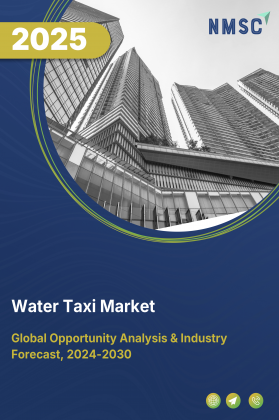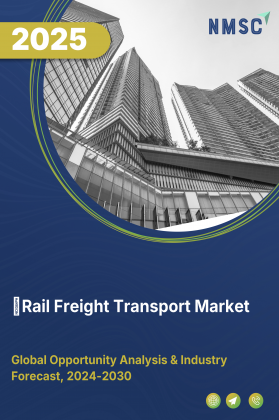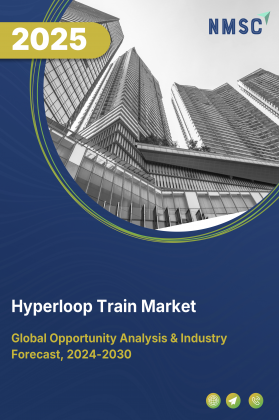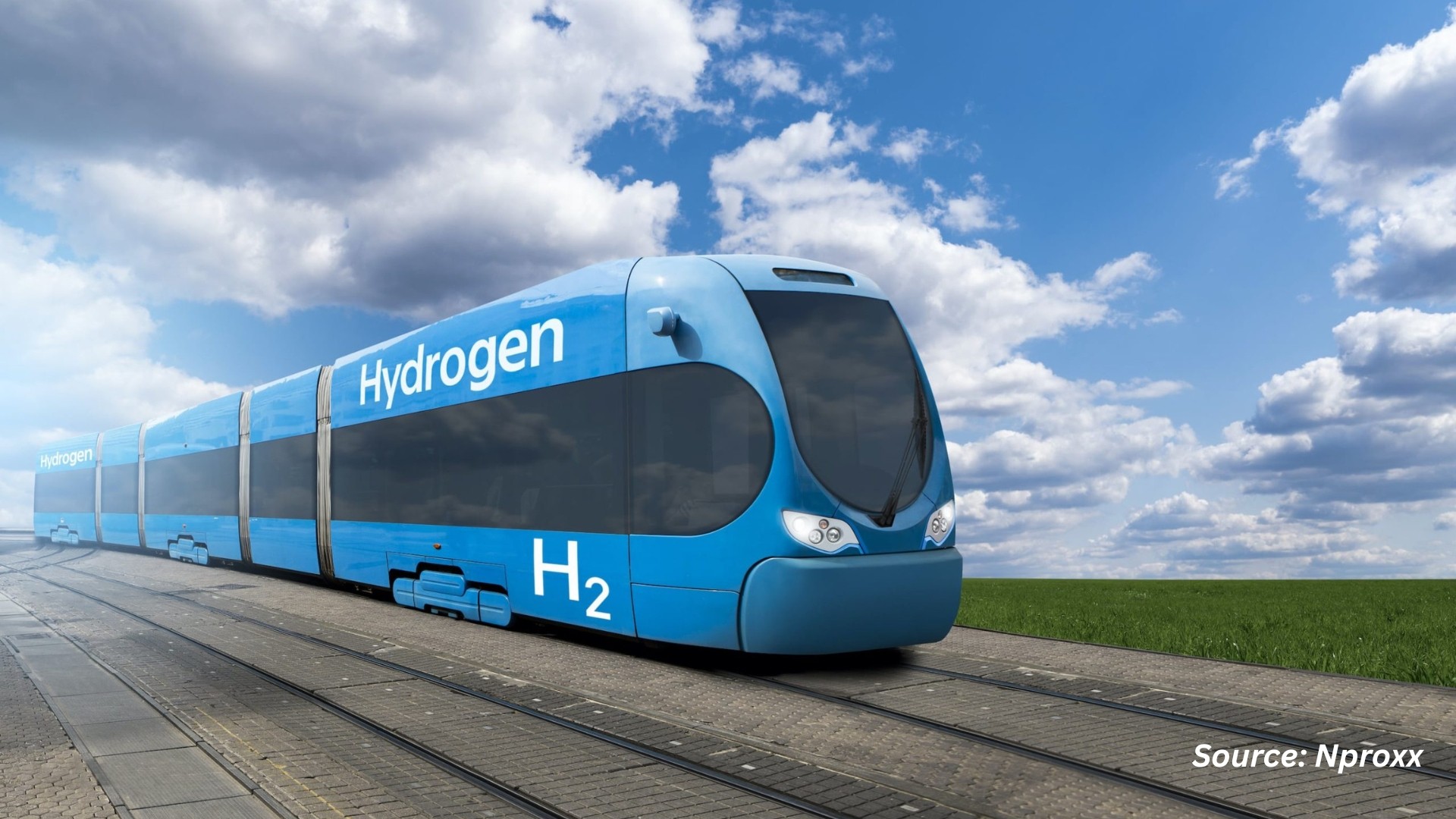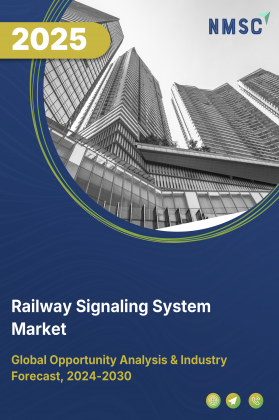
Railway Signaling System Market by Component (Hardware, Software, and Services), by Technology (ATP, PTC, CBTC, ATO, Others), by Deployment Mode (On-Premise, Cloud-Based, Hybrid), by Demand Type (New Installation, Retrofitting/Upgrades), by Application (Inside the Station, Outside the Station), and by End User (High-Speed Rail, Mainline Railways, Urban Transit/Metro, Freight Railways, Industrial & Cargo Terminals) and Others – Global Opportunity Analysis and Industry Forecast, 2025–2030
Industry Outlook
The global Railway Signaling System Market size was valued at USD 19.48 billion in 2024 and is predicted to reach USD 21.22 billion by the end of 2025. The industry is predicted to reach USD 32.49 billion by 2030 with a CAGR of 8.9% from 2025 to 2030.
The market is witnessing robust growth driven by rising passenger mobility, freight movement, and increasing network congestion, which necessitate advanced signaling solutions to enhance efficiency, safety, and capacity. Governments and private operators are making significant investments in modernizing infrastructure, upgrading aging equipment, and expanding high-speed rail networks.
Strict safety regulations are further accelerating the adoption of advanced technologies such as ATP, CBTC, and ETCS to ensure reliable and secure operations. However, high initial costs of procurement, installation, and integration remain a restraint, particularly for smaller operators. Looking ahead, the integration of digital, AI-driven, and cloud-based signaling systems presents strong opportunities for building smart, connected, and future-ready railway networks.
Growing Rail Traffic Boost the Railway Signaling System Market Growth
Rising passenger mobility and freight movement globally are increasing rail network congestion, creating a critical need for advanced signaling solutions. Modern signaling systems help optimize train frequency, reduce delays, and prevent accidents, which is especially crucial on busy and high-speed routes.
As per IBEF, in FY25*, railway traffic revenue is estimated to be USD 32.07 billion comprising 99.4% of the total revenue, reflecting the significant scale and economic importance of rail operations. The demand for capacity enhancement and operational efficiency is driving rail operators to invest in state-of-the-art signaling technologies.
Government and Private Investments in Railway Infrastructure Increase Market Trends
Railway modernization initiatives and large-scale infrastructure projects by governments and private operators worldwide are accelerating the railway signaling system market growth. Investments are directed toward upgrading aging signaling equipment, expanding high-speed rail networks, and integrating smart control systems.
For instance, in June 2025, Canadian National Railway (CN) announced a significant investment of approximately $295 million across multiple U.S. states, including Illinois, Mississippi, Tennessee, and Indiana, as part of its 2025 capital investment program. Such initiatives support sustainable transportation, reduce operational bottlenecks, and enhance rail safety, fueling adoption of advanced signaling solutions.
Stringent Safety Regulations Drive Signaling System Adoption
Governments worldwide are enforcing strict safety standards for rail operations, mandating the use of advanced systems that prevent collisions, monitor train movements in real time, and ensure operational reliability. These regulations compel railway operators to adopt sophisticated signaling technologies such as Automatic Train Protection (ATP), Communication-Based Train Control (CBTC), and the European Train Control System (ETCS). Compliance with these safety mandates not only enhances passenger and freight security but also creates a direct demand for next-generation signaling solutions.
As rail networks expand and traffic density increases, operators are investing heavily in modern signaling systems to meet regulatory requirements, reduce accidents, and improve overall network efficiency, making safety regulations a major driver for railway signaling system market demand.
High Initial Costs Act as a Market Restraint
Advanced signalling systems provide long-term operational efficiencies, enhanced safety, and energy savings, the high upfront costs of procurement, installation, system integration, and staff training remain a significant barrier. Smaller and regional rail operators face budget constraints, which slow adoption of modern signaling solutions.
This cost barrier affects not only the acquisition of new signaling technologies but also the retrofitting of existing infrastructure with automated and digital systems. Consequently, high initial investment requirements continue to restrain market growth, particularly in developing regions and among operators with limited capital expenditure capacity.
Integration of Digital and Smart Railway Networks Creates Future Opportunity for the Railway Signaling System Market
The shift toward digital and smart railway networks is creating substantial opportunities for the railway signaling system market expansion. Cloud-based signaling platforms, AI-driven analytics, and IoT-enabled monitoring enable real-time track and train condition monitoring, predictive maintenance, and optimized traffic management. By integrating these technologies, operators enhance operational reliability, minimize service disruptions, improve energy efficiency, and provide a better passenger experience.
Additionally, smart signaling systems support interoperability across national and international rail networks, making them increasingly essential for modern rail operations. These advancements open avenues for technology providers to deliver scalable, intelligent, and future-ready signaling solutions, driving sustained market growth.
Market Segmentation and Scope of the Study
The railway signaling system market report is segmented by component, technology, deployment mode, demand type, application, end user and region. Components include hardware such as signal lights, signal posts, track circuits, interlocking systems, sensors, and others; software including train control, predictive maintenance, real-time monitoring, and traffic management; and services such as installation, maintenance and support, system integration, and others. Technologies cover automatic train protection (ATP), positive train control (PTC), communication-based train control (CBTC), automatic train operation (ATO), and others. Deployment modes comprise on-premise, cloud-based, and hybrid solutions. Demand type includes new installations and retrofitting. Applications are inside stations, platform management, departure and arrival control, and interlocking, and outside stations, including trackside signaling and train spacing. End users include high-speed, mainline, urban, freight, and industrial or cargo rail, with regional analysis covering North America, Europe, Asia-Pacific, and the Rest of the World.
Geographical Analysis
One key driver for the railway signaling system market share in North America is the deployment of Positive Train Control (PTC) systems. The U.S. government has mandated the implementation of PTC across major freight and passenger rail networks to enhance safety, reduce human error, and prevent accidents such as collisions and derailments. This regulatory push has accelerated investments by rail operators in advanced signaling technologies, digital control systems, and real-time monitoring solutions. Additionally, ongoing upgrades to freight corridors and urban transit networks further boost demand for modern signaling infrastructure, positioning safety compliance and regulatory enforcement as a primary growth driver in the region.
Europe is experiencing strong growth in the railway signaling system market due to the rapid expansion of urban transit networks across major cities. Rising urbanization and the push for sustainable mobility are driving investments in metro, light rail, and commuter rail projects. These systems rely heavily on advanced signaling technologies such as Communication-Based Train Control (CBTC) and Automatic Train Operation (ATO) to improve frequency, reduce delays, and enhance safety. The growing demand for reliable and eco-friendly public transport is accelerating the adoption of smart signaling solutions, positioning urban transit expansion as a key market driver alongside Europe’s broader modernization and sustainability goals.
Asia Pacific is a key growth hub for the railway signaling system market, driven by massive investments in high-speed rail and metro projects across countries like China, India, and Japan. The region’s rapid urbanization and rising passenger demand are pushing governments and operators to modernize networks with advanced signaling technologies such as CBTC, ATP, and ATO. Projects like India’s dedicated freight corridors, China’s extensive high-speed rail expansion, and Japan’s automation upgrades highlight this trend. Additionally, smart city initiatives and the integration of digital, AI-driven signaling systems are further boosting adoption. These developments make Asia Pacific a major contributor to global market growth.
Rest of the World (ROW) is witnessing growing demand for railway signaling systems driven by infrastructure expansion in emerging markets and modernization in regions like the Middle East, Africa, and Latin America. Countries are investing in new rail projects to boost trade, enhance passenger connectivity, and support economic diversification. For example, Middle Eastern nations are developing high-speed and urban rail networks, while Latin America is upgrading metro and commuter systems. In Africa, investments are focused on freight and industrial corridors to strengthen logistics. These initiatives, combined with the adoption of digital and automated signaling technologies, are creating strong growth opportunities in ROW.
Strategic Innovations Adopted by Key Players
Key players in the railway signaling system industry are driving growth through major contract wins, large-scale deployments, and digital infrastructure investments.
-
In June 2025, Alstom SA delivered and commissioned the ERTMS signalling system on Sweden’s strategic Iron Ore Line, marking the first non-pilot deployment in the country.
-
In February 2025, Siemens Mobility secured a share of a USD 3.0 billion contract to supply digital control and signalling equipment for Deutsche Bahn.
-
In January 2025, Alstom signed a landmark contract to modernize Line 6 of the Madrid Metro, converting it into the city's first driverless metro using its Urbalis CBTC system (GoA4 automation) alongside a new ATS system.
-
In March 2024, Siemens invested USD 127 million in a state-of-the-art signalling and control tech center at Chippenham, aimed at digitizing rail infrastructure, set to open in 2026.
Key Benefits
-
The report provides quantitative analysis and estimations of the sector from 2025 to 2030, which assists in identifying the prevailing market opportunities.
-
The study comprises a deep dive analysis of the current and future railway signaling system market trends to depict prevalent investment pockets in the industry.
-
Information related to key drivers, restraints, and opportunities and their impact on the railway signaling system market is provided in the report.
-
Competitive analysis of the players, along with their market share is provided in the report.
-
SWOT analysis and Porters Five Forces model is elaborated in the study.
-
Value chain analysis in the market study provides a clear picture of roles of stakeholders.
Railway Signaling System Market Key Segments
By Component
-
Hardware
-
Signal Lights
-
Signal Posts
-
Track Circuits
-
Interlocking Systems
-
Sensors
-
Others
-
-
Software
-
Train Control Software
-
Predictive Maintenance Software
-
Real-Time Monitoring Software
-
Traffic Management Software
-
-
Services
-
Installation Services
-
Maintenance and Support Services
-
System Integration Services
-
Others
-
By Technology
-
Automatic Train Protection System (ATP)
-
Positive Train Control System (PTC)
-
Communication-Based Train Control System (CBTC)
-
Automatic Train Operation System (ATO)
-
Others
By Deployment Mode
-
On-Premise Control Systems
-
Cloud-Based Signalling Solutions
-
Hybrid Solutions
By Demand Type
-
New Installation
-
Retrofitting/Upgrades
By Application
-
Inside the Station
-
Platform Management
-
Train Departure and Arrival Control
-
Station Interlocking
-
-
Outside the Station
-
Trackside Signaling
-
Train Spacing and Routing
-
By End User
-
High speed rail
-
Mainline railways
-
Urban Transit / Metro
-
Freight Railways
-
Industrial & Cargo Terminals
By Region
-
North America
-
The U.S.
-
Canada
-
Mexico
-
-
Europe
-
The UK
-
Germany
-
France
-
Italy
-
Spain
-
Denmark
-
Netherlands
-
Finland
-
Sweden
-
Norway
-
Russia
-
Rest of Europe
-
-
Asia Pacific
-
China
-
Japan
-
India
-
South Korea
-
Australia
-
Indonesia
-
Singapore
-
Taiwan
-
Thailand
-
Rest of Asia Pacific
-
-
RoW
-
Latin America
-
Middle East
-
Africa
-
Key Players
-
Alstom SA
-
Siemens Mobility GmbH
-
Hitachi Rail Limited
-
Mitsubishi Electric Corporation
-
The Nippon Signal Co., Ltd
-
Stadler Signalling AG
-
Hollysys Automation Technologies Ltd.
-
voestalpine Railway Systems GmbH
-
MERMEC S.p.A.
-
Pintsch GmbH
-
Thales Group
-
ALTPRO d.o.o.
-
Scheidt & Bachmann GmbH
Report Scope And Segmentation
|
Parameters |
Details |
|
Market Size in 2025 |
USD 21.22 Billion |
|
Revenue Forecast in 2030 |
USD 32.49 Billion |
|
Growth Rate |
CAGR of 8.9% from 2025 to 2030 |
|
Analysis Period |
2024–2030 |
|
Base Year Considered |
2024 |
|
Forecast Period |
2025–2030 |
|
Market Size Estimation |
Billion (USD) |
|
Growth Factors |
|
|
Countries Covered |
28 |
|
Companies Profiled |
15 |
|
Market Share |
Available for 10 companies |
|
Customization Scope |
Free customization (equivalent up to 80 working hours of analysts) after purchase. Addition or alteration to country, regional, and segment scope. |
|
Pricing and Purchase Options |
Avail customized purchase options to meet your exact research needs. |

















 Speak to Our Analyst
Speak to Our Analyst



